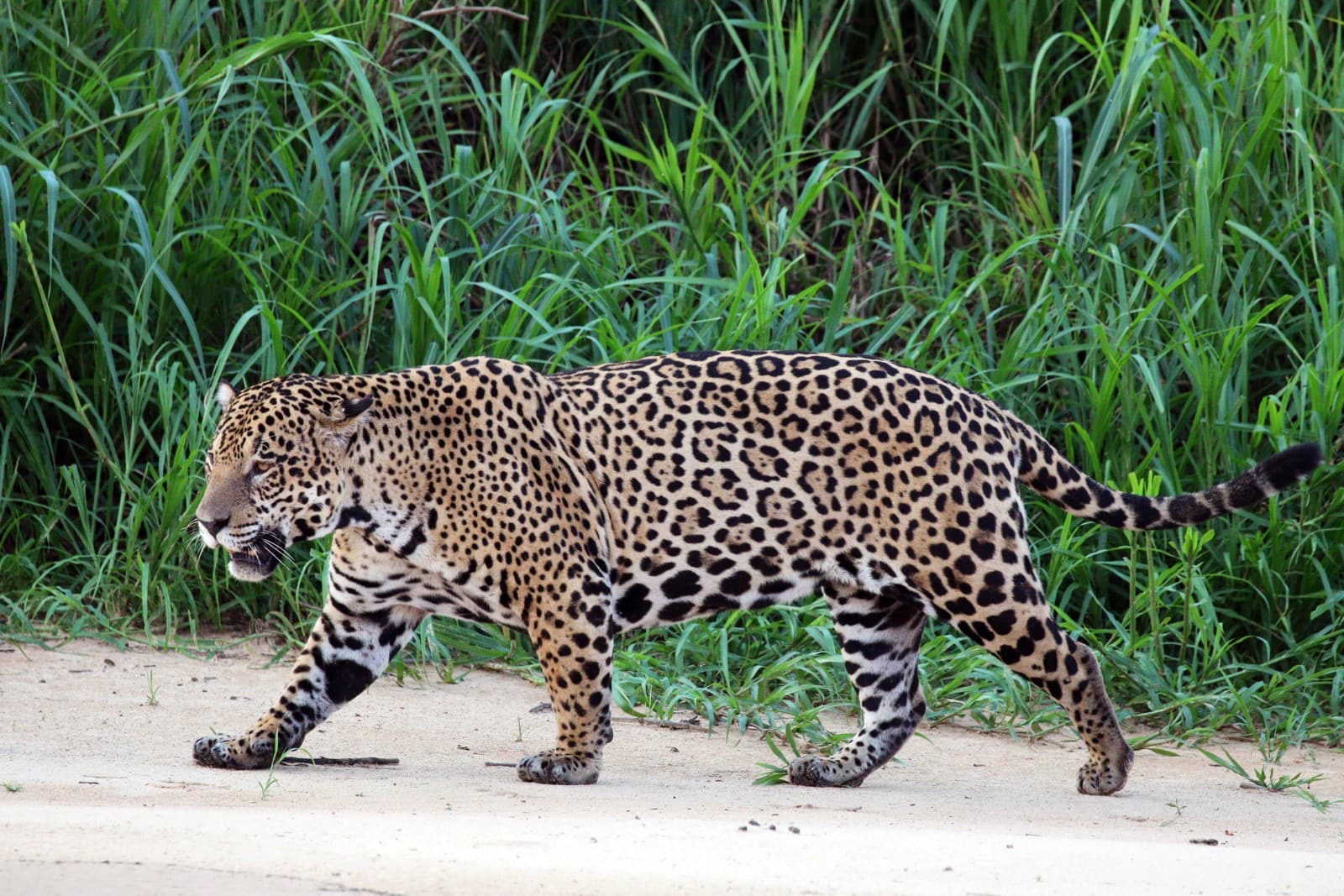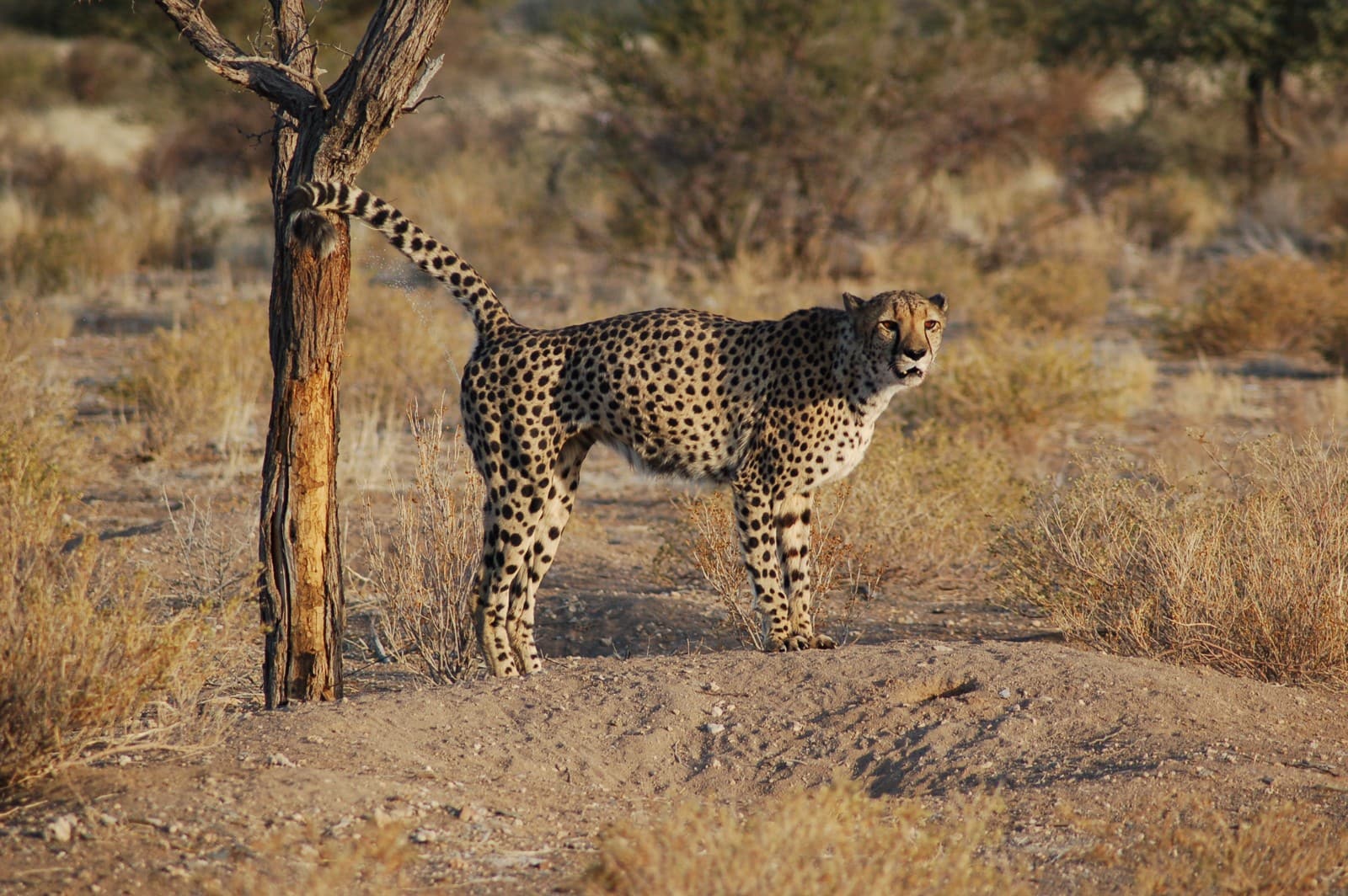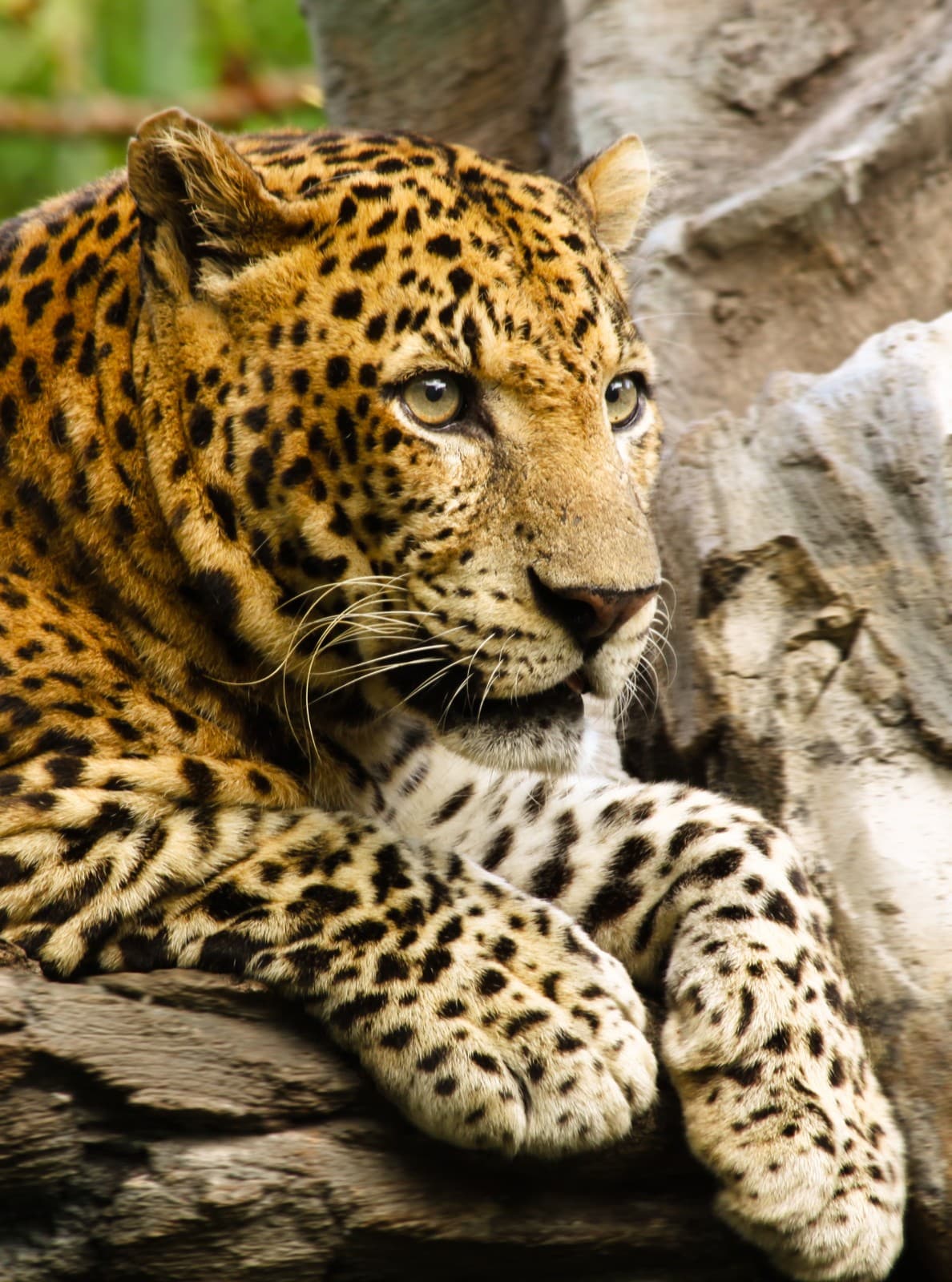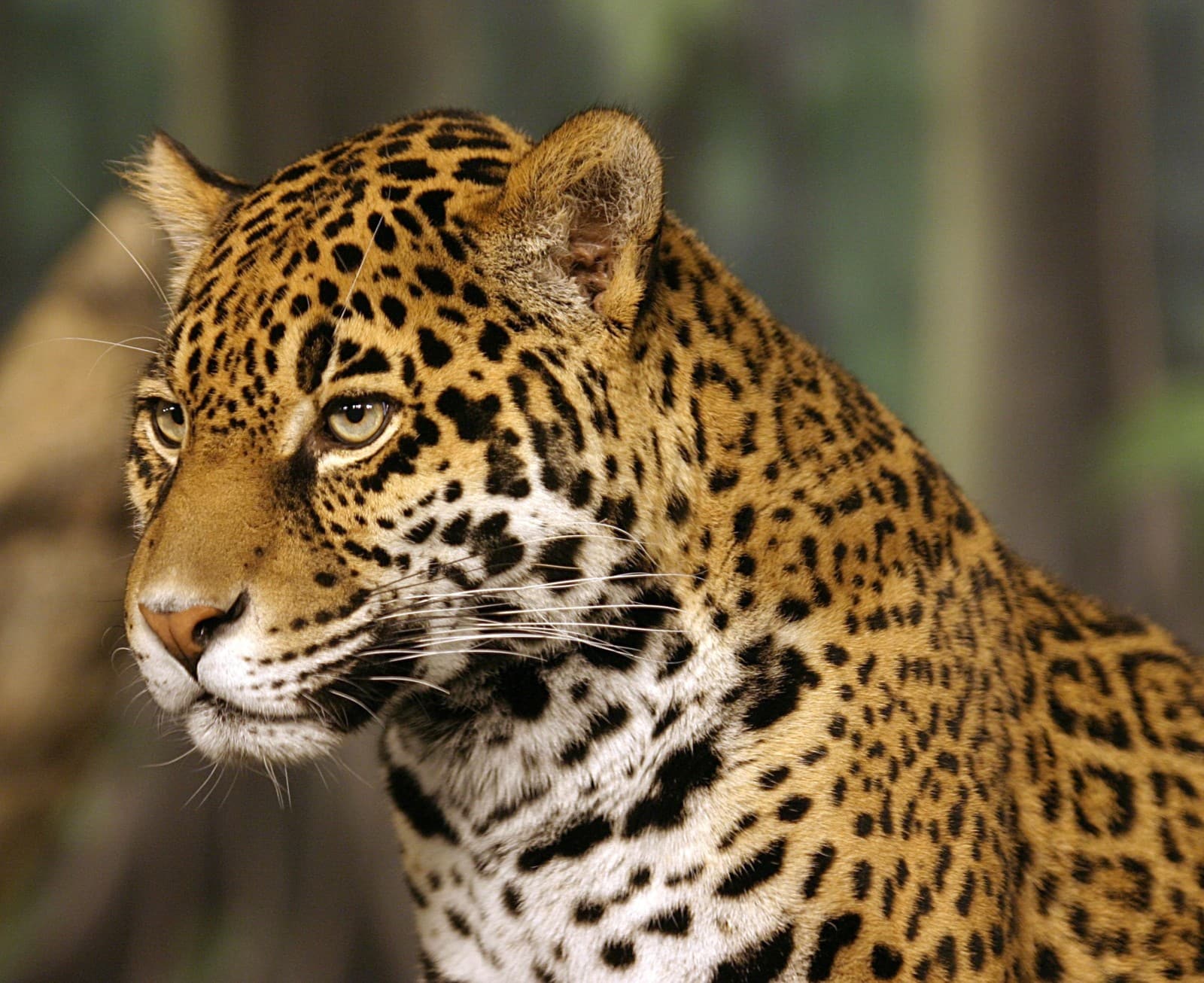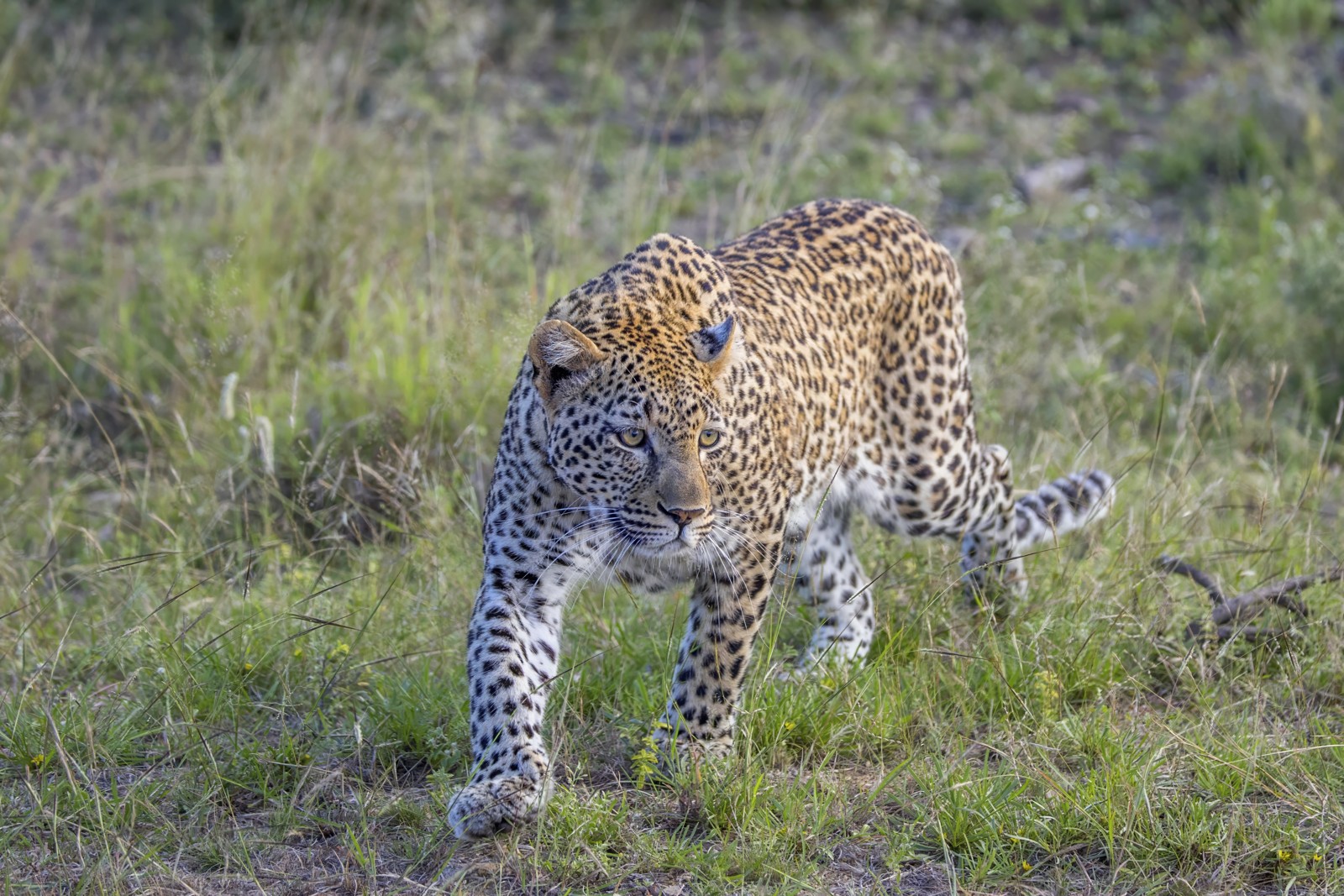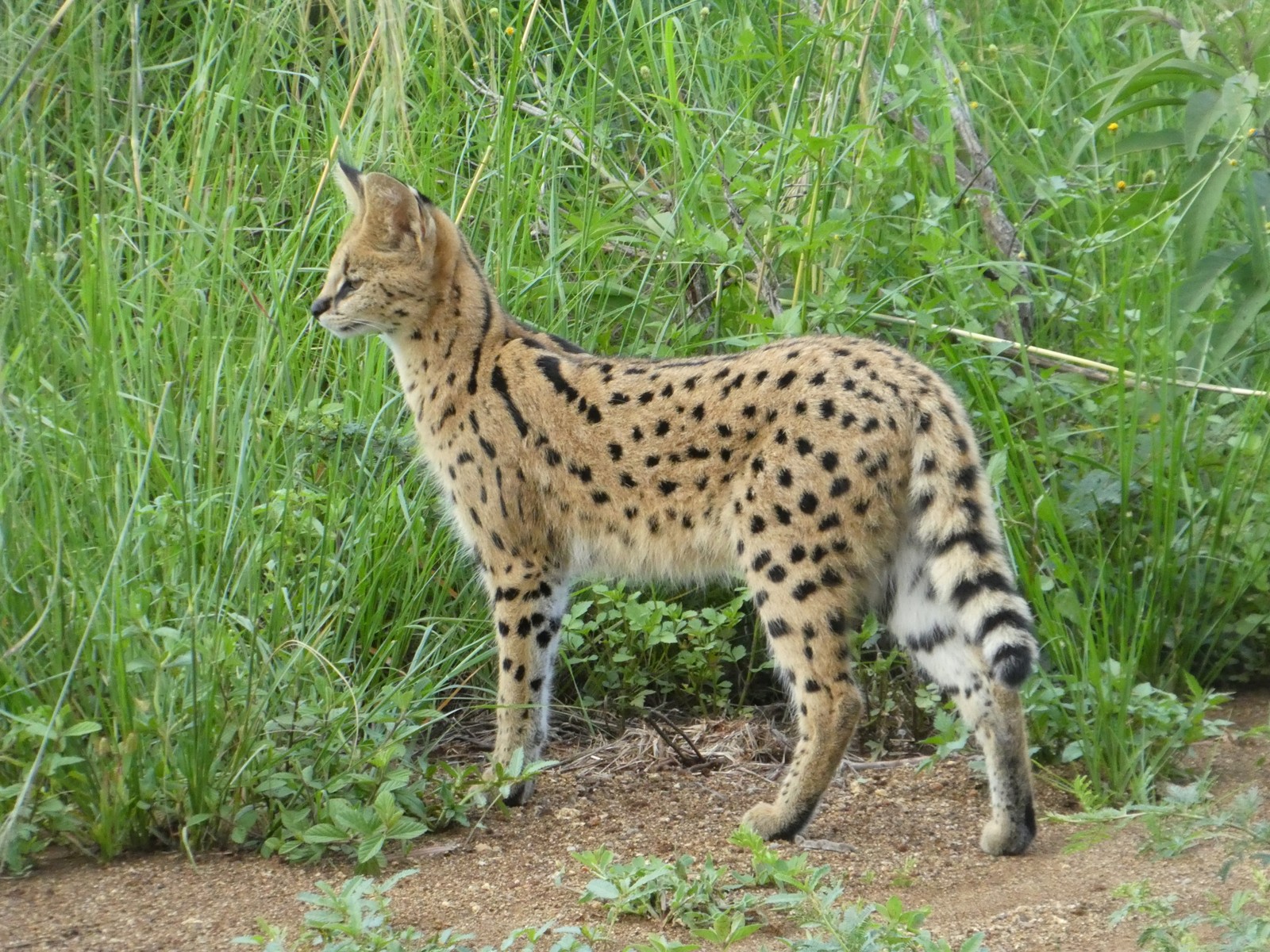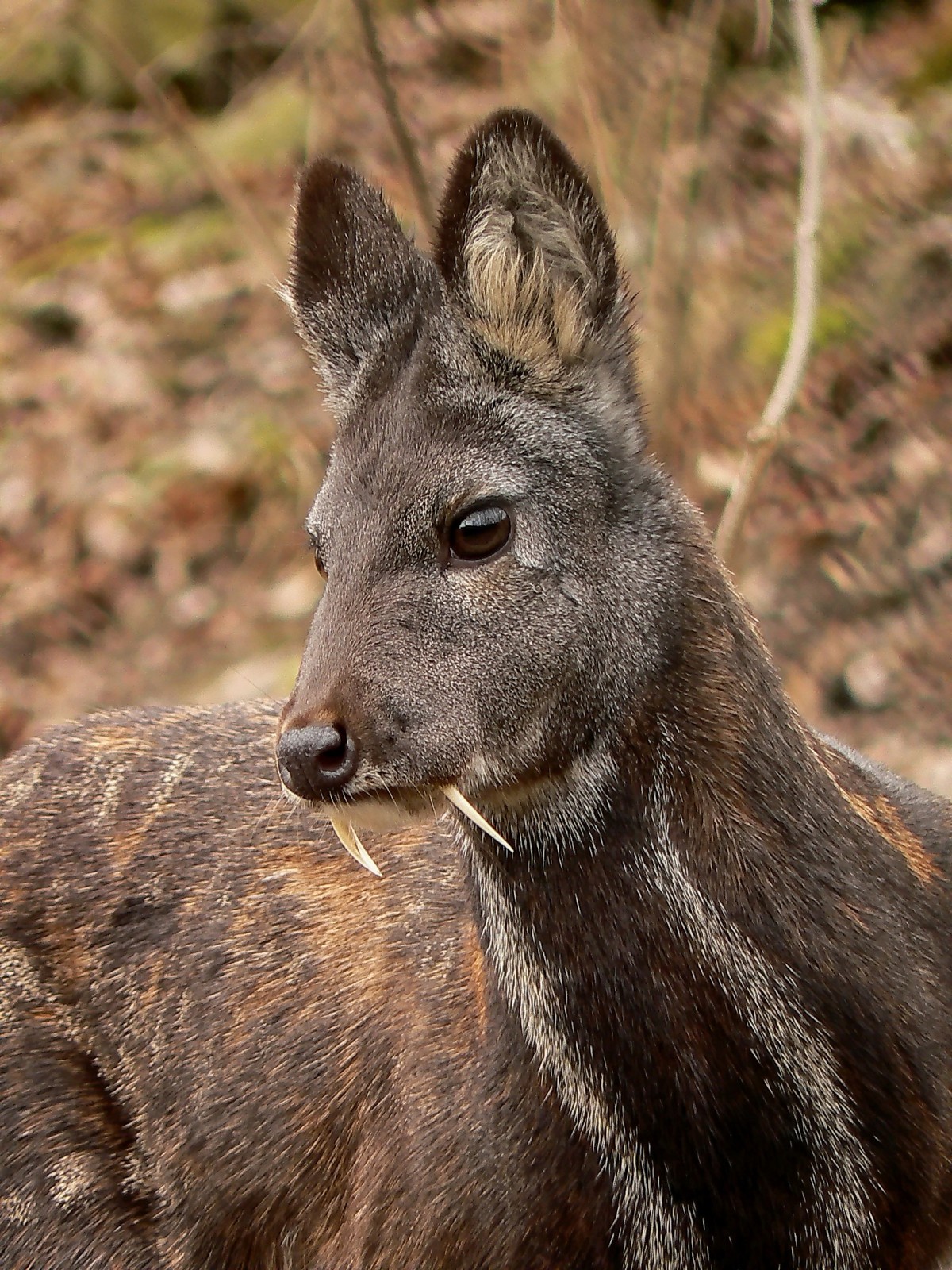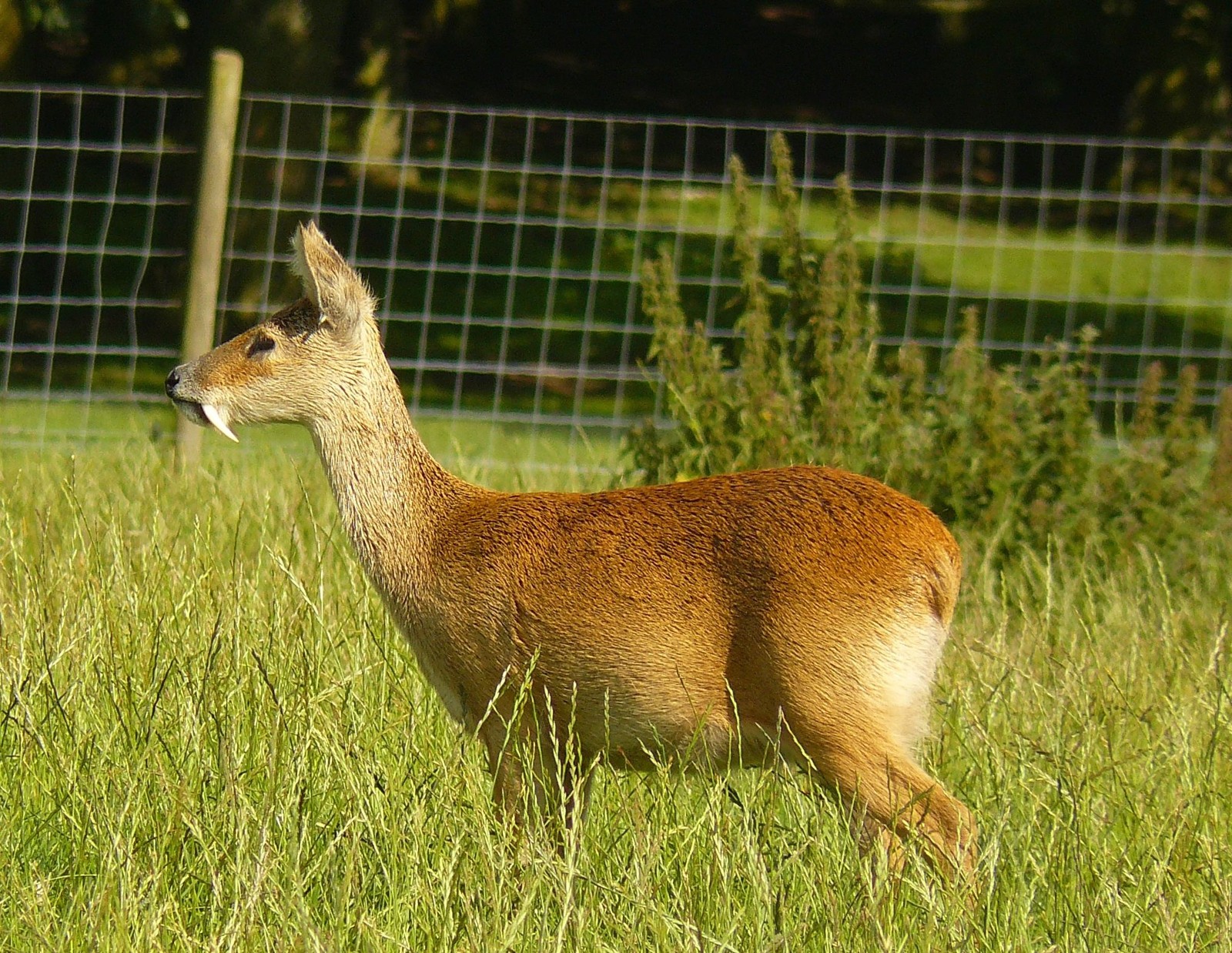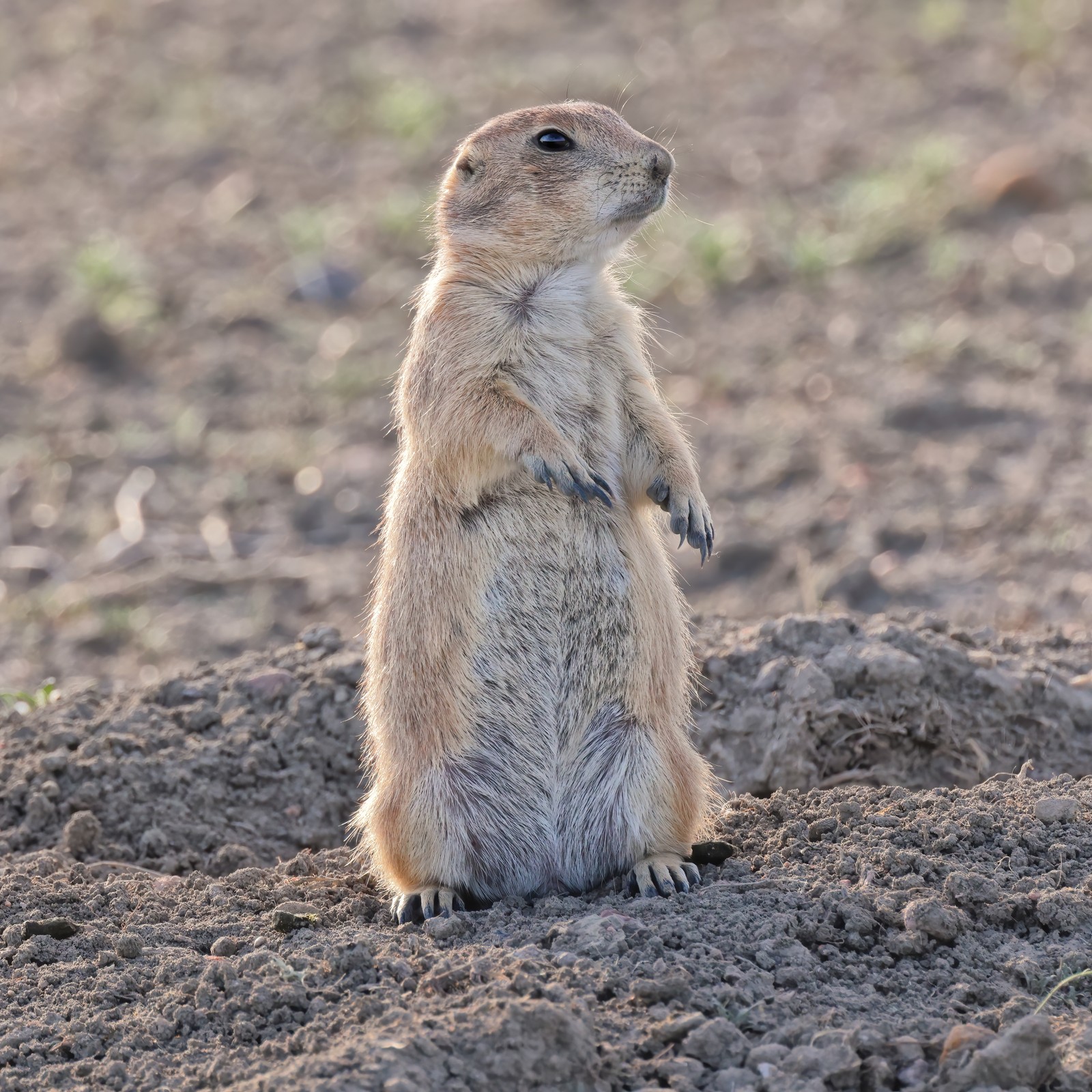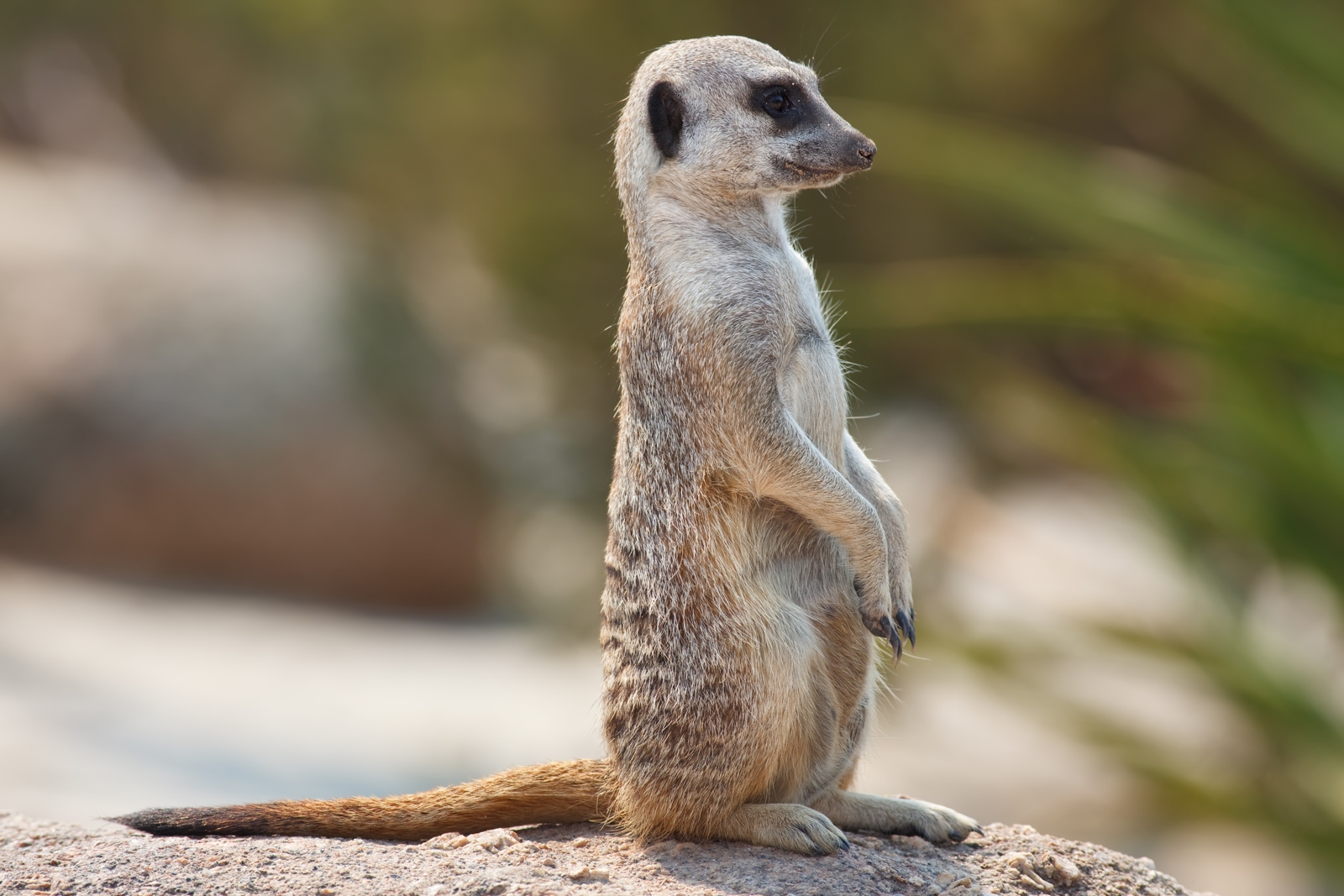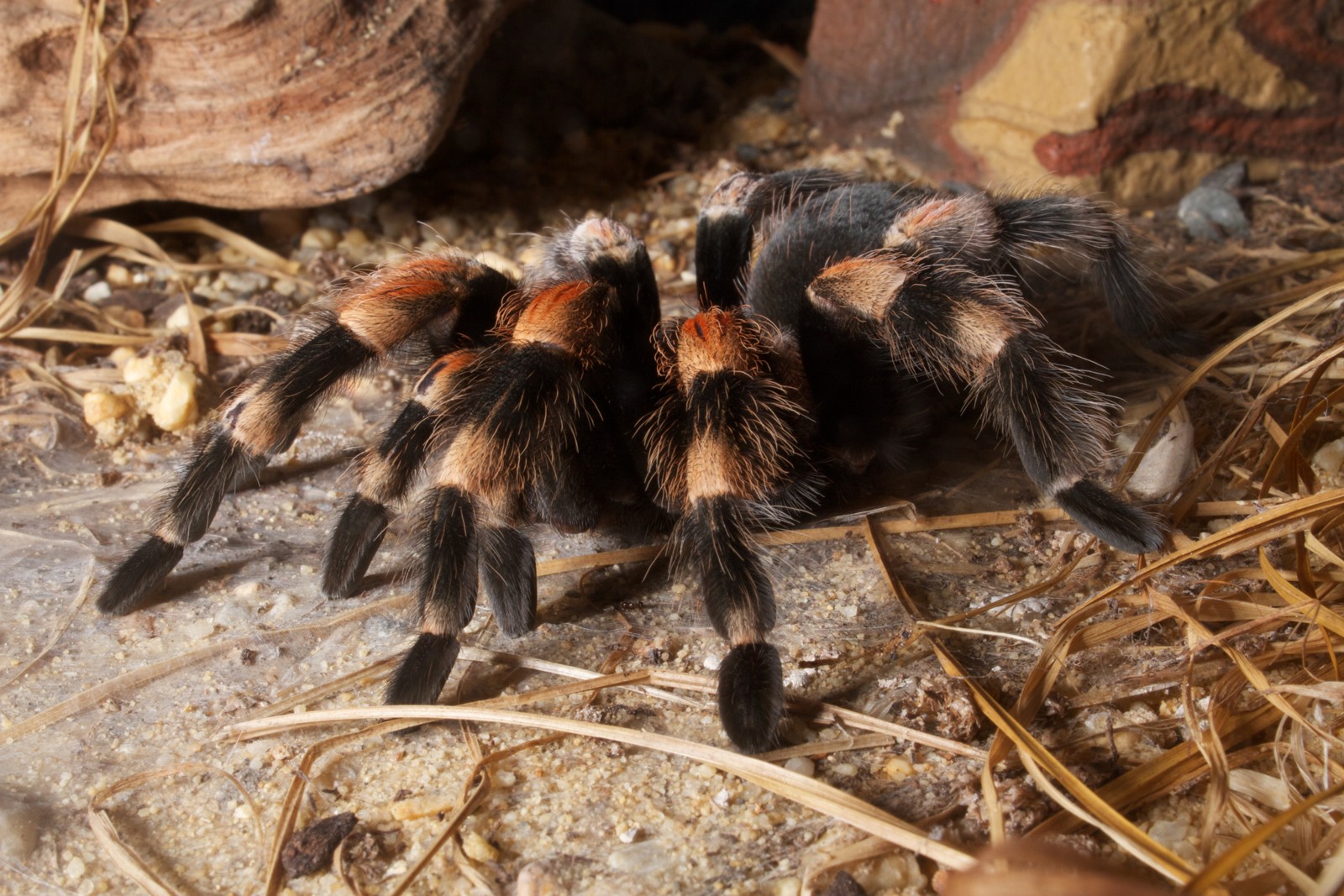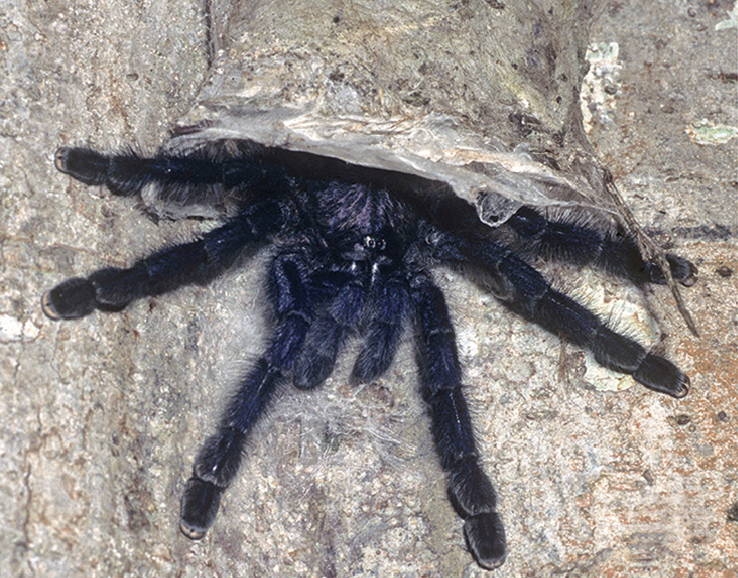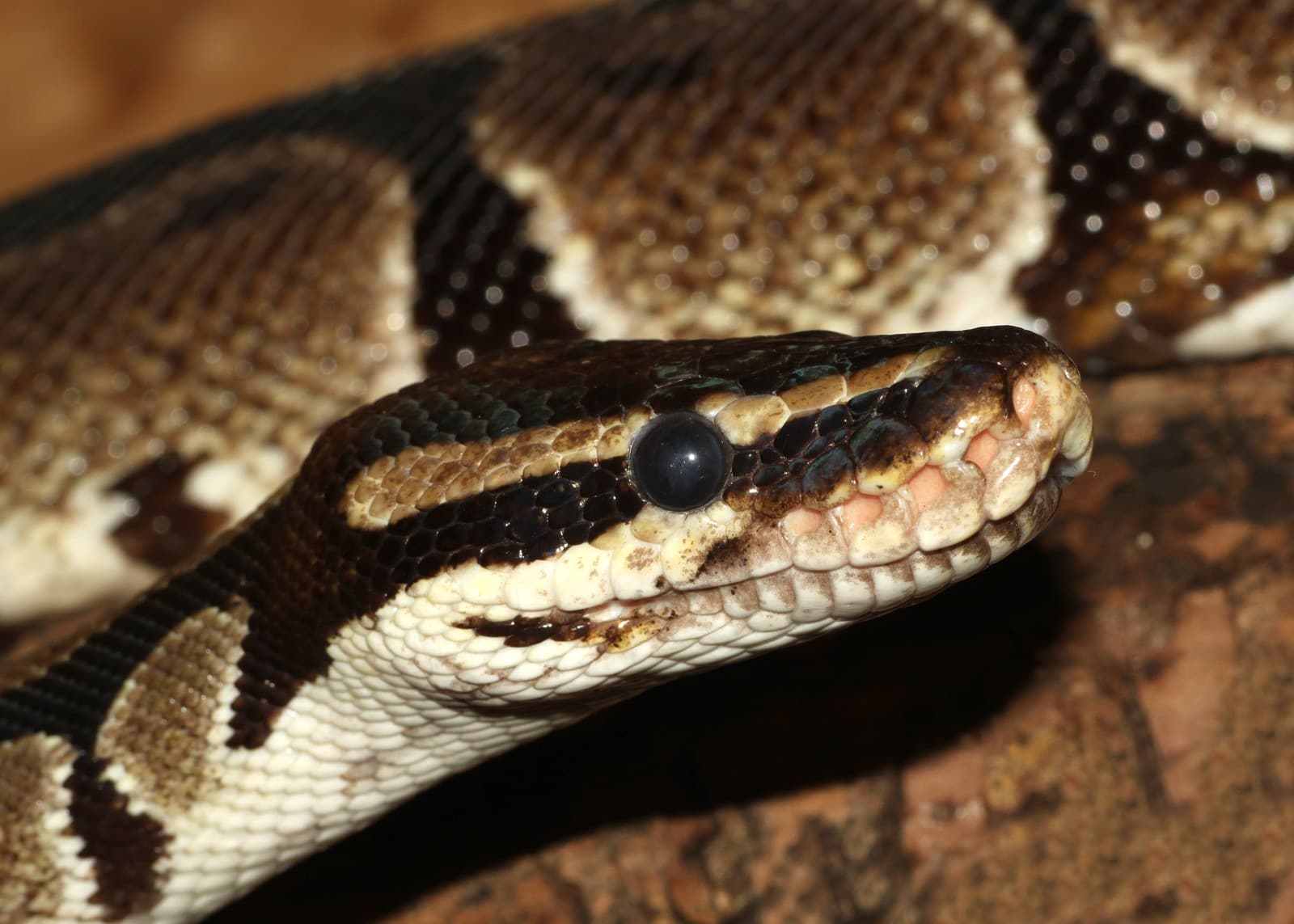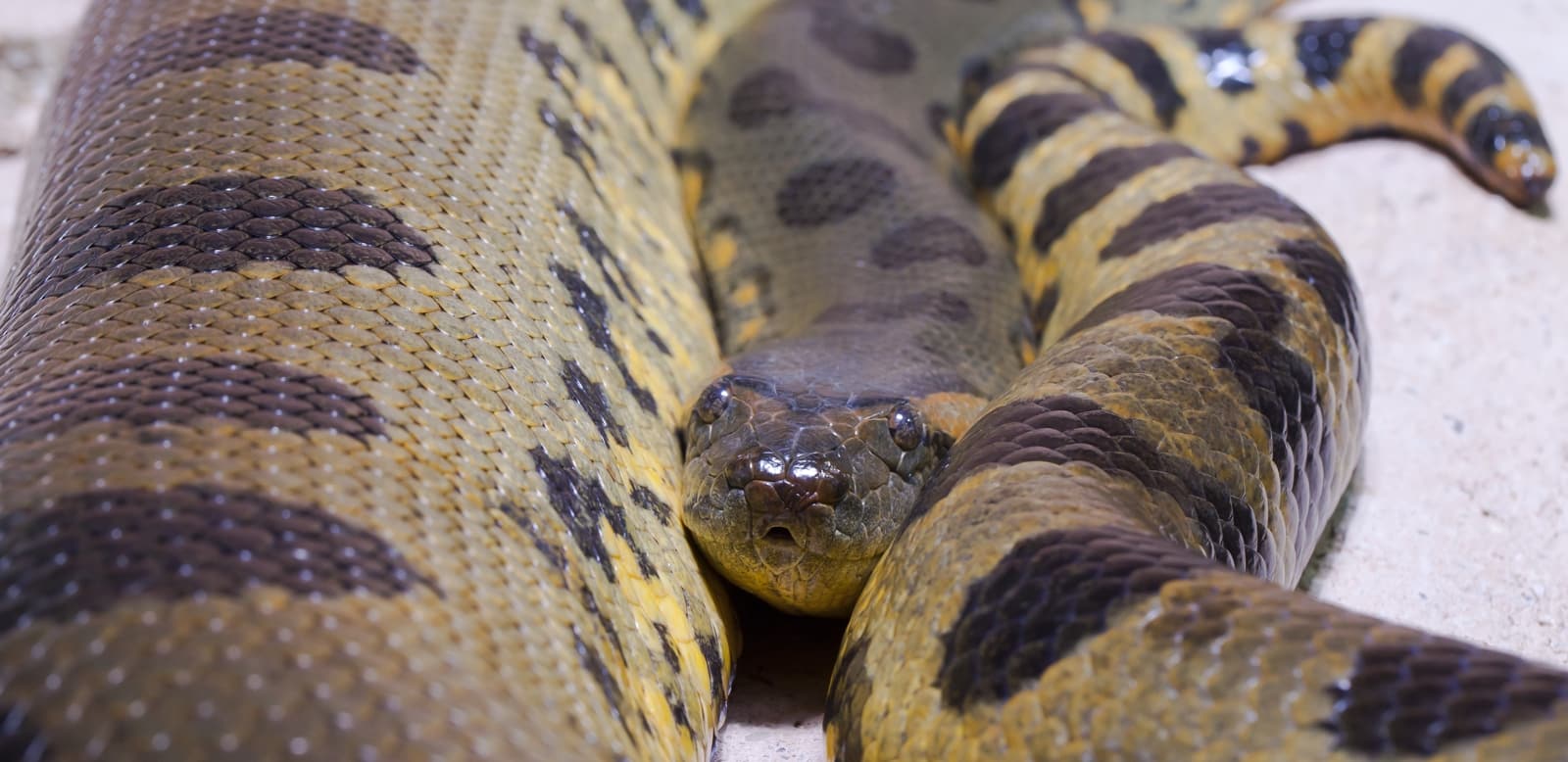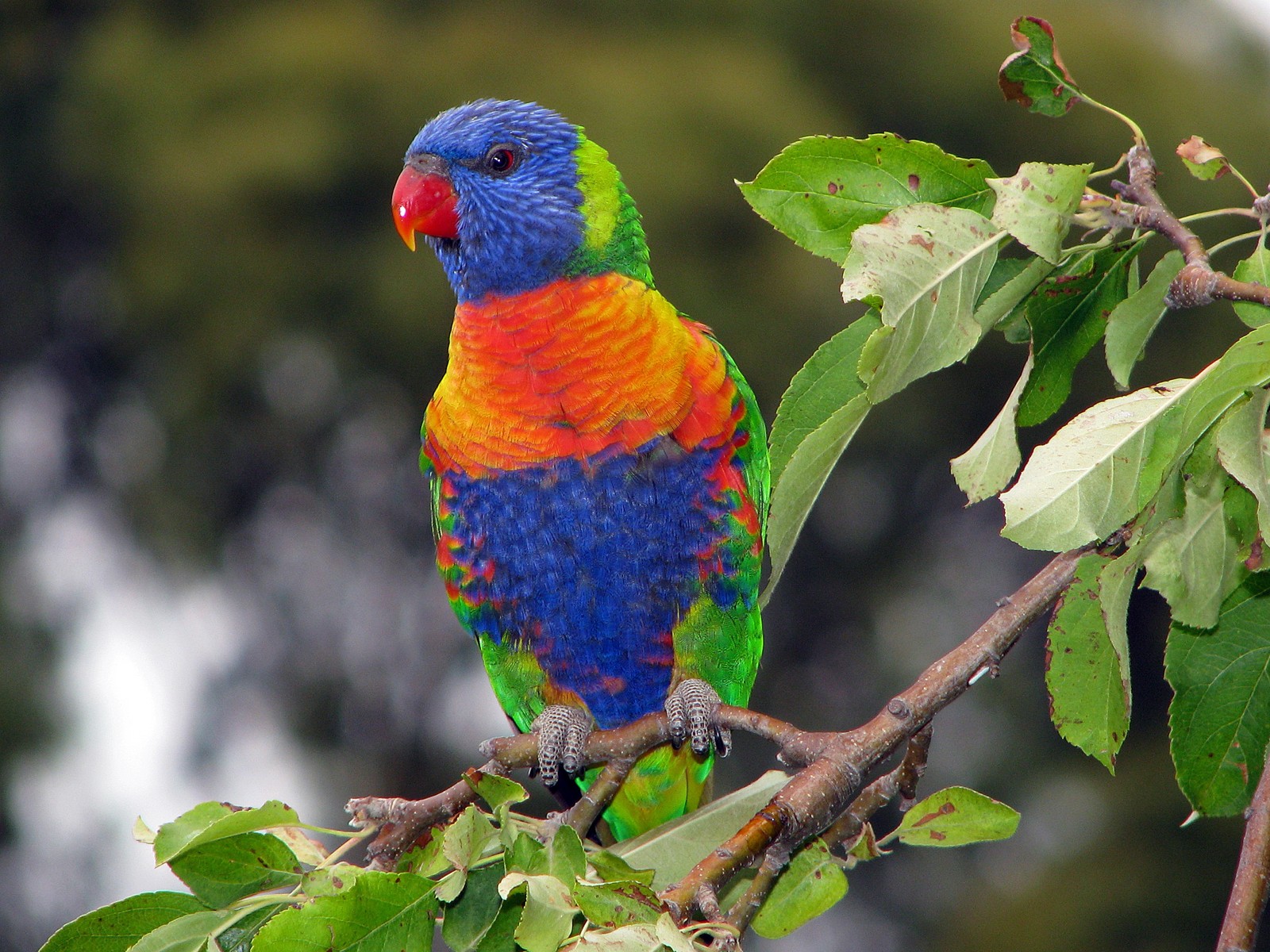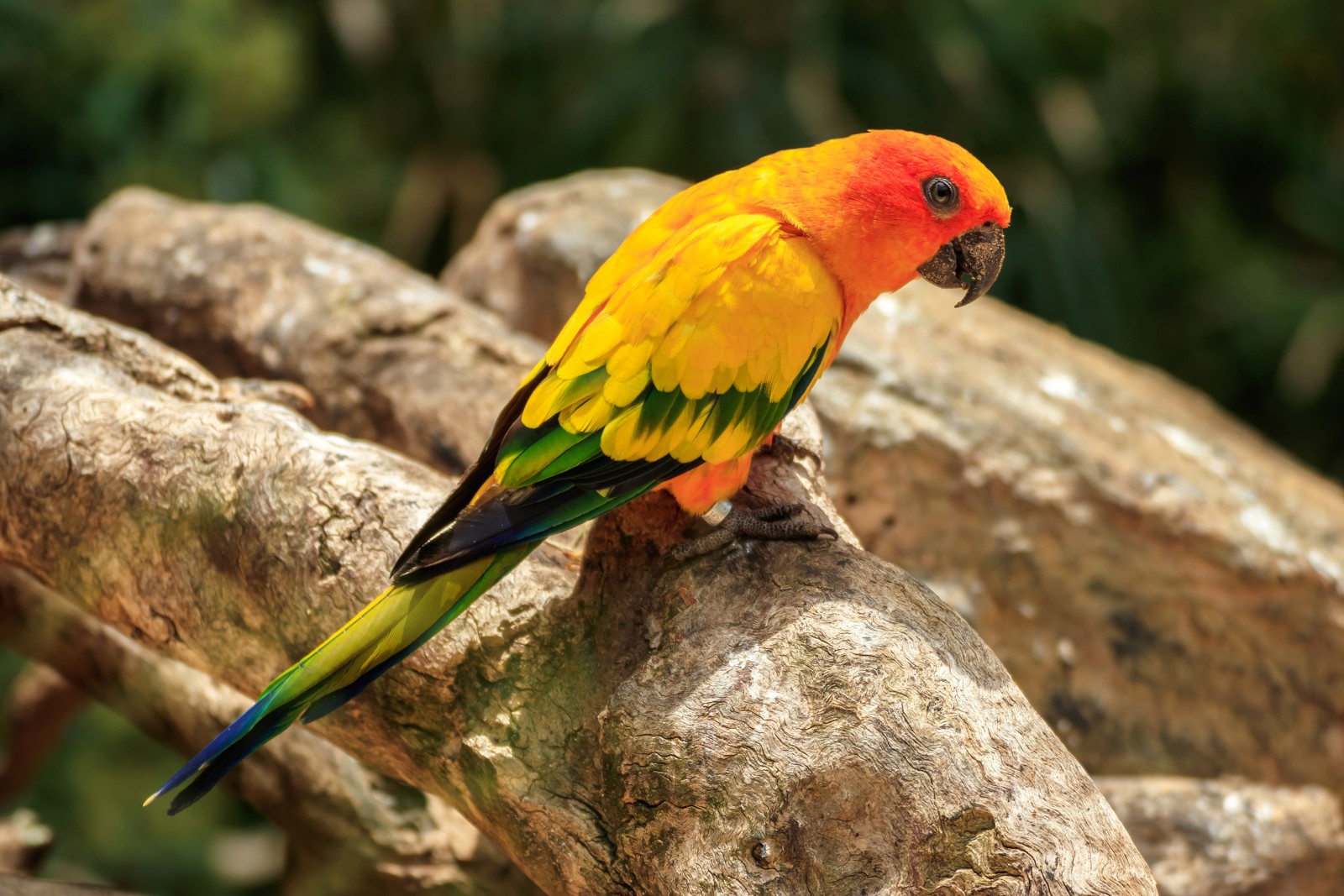Cheetah vs Leopard: A Complete Comparison
The cheetah and leopard, while both spotted African cats, are remarkably different species with distinct evolutionary paths. Cheetahs, built for speed, can reach 70 mph (112 km/h) and weigh 65-140 pounds (29-64 kg), while the more muscular leopard weighs 60-200 pounds (27-90 kg) and excels at stealth hunting. Their spots tell different stories too – cheetahs sport solid black dots, while leopards showcase complex rosette patterns.
Understanding the difference between a cheetah and leopard goes beyond their spots. These magnificent cats have evolved distinct hunting strategies, physical characteristics, and behaviors that make them uniquely adapted to their respective niches in the African ecosystem. Let’s explore their key differences through detailed analysis and expert insights.
<img src=“/images/cheetah-leopard_cheetah.jpg” alt=“A wild cheetah marking its territory against a dead tree in the African savanna. The big cat’s distinctive spotted coat pattern is clearly visible, with black spots scattered across its tan fur. The cheetah’s slender, athletic build and long tail are highlighted as it stands alert on sandy ground, surrounded by dry grass and sparse vegetation. The late afternoon sunlight illuminates its muscular frame and characteristic black “tear lines” running from its eyes to mouth. The arid landscape and scattered vegetation typical of cheetah habitat stretches into the background, creating a natural scene of this endangered African predator in its native environment.”>
© Joachim Huber / CC BY-SA 2.0
The cheetah’s distinctive solid black spots and tear-line markings set it apart from other big cats. Notice the slender build and long legs – adaptations for high-speed pursuit hunting across open savannas.
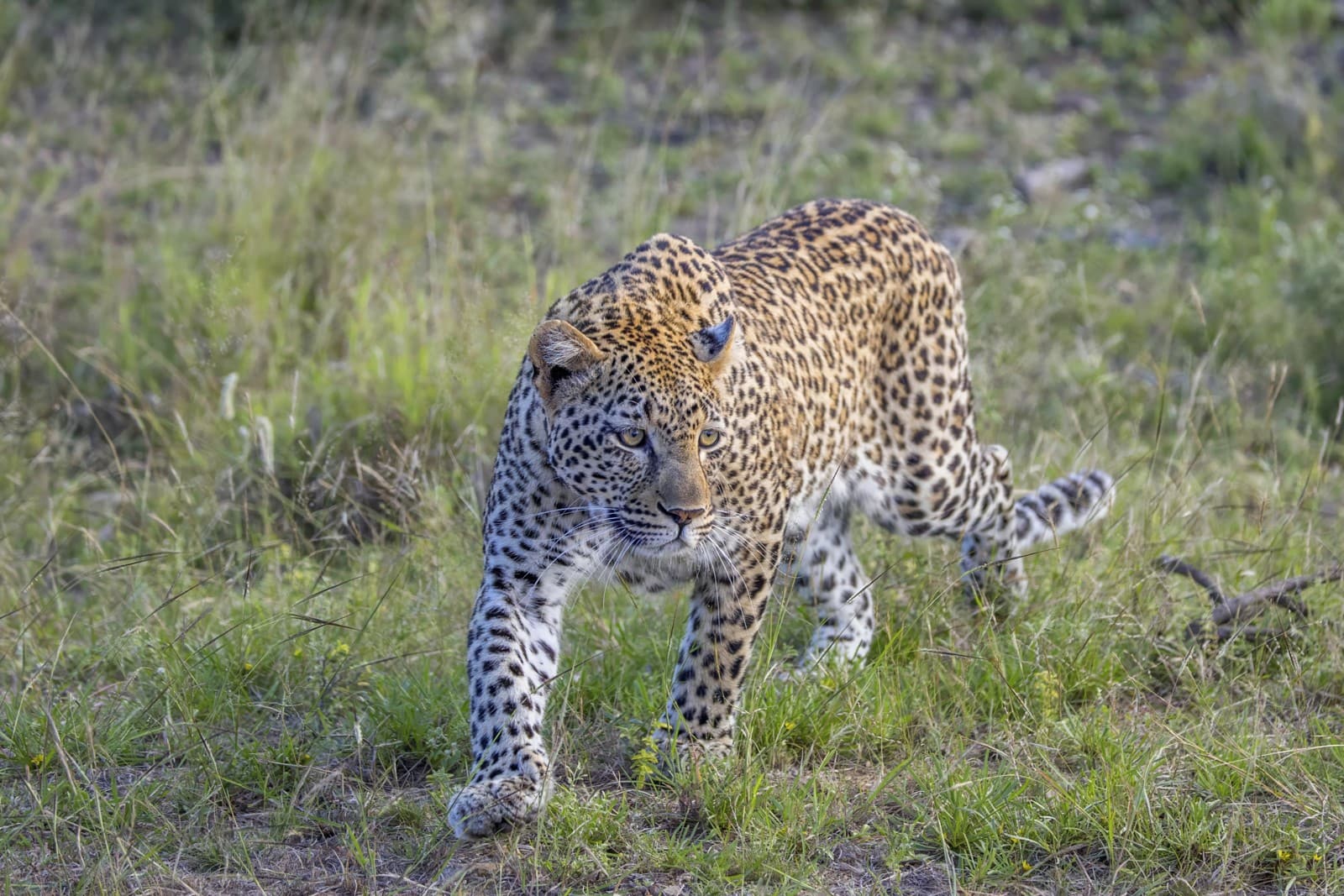
© Charles J. Sharp / CC BY-SA 4.0
The leopard’s complex rosette pattern and muscular build contrast sharply with the cheetah. Note the stockier frame and shorter legs – perfect for ambush hunting and tree-climbing abilities.
Key Physical and Behavioral Differences
| Feature | Cheetah | Leopard |
|---|---|---|
| Body Build | Slim, aerodynamic | Muscular, stocky |
| Weight | 65-140 lbs (29-64 kg) | 60-200 lbs (27-90 kg) |
| Speed | Up to 70 mph (112 km/h) | Up to 36 mph (58 km/h) |
| Spot Pattern | Solid black dots | Complex rosettes |
| Hunting Style | Chase and trip | Ambush and pounce |
| Tree Climbing | Limited ability | Excellent climber |
Habitat and Hunting Strategies
Cheetahs prefer open savannas where they can utilize their incredible speed. They hunt during daylight hours, relying on bursts of acceleration to catch medium-sized prey like gazelles and impalas. Their hunting success rate reaches 58% - impressive for big cats.
Leopards, conversely, thrive in diverse habitats from rainforests to deserts. These masterful ambush predators hunt primarily at night, using stealth to approach prey before launching a powerful attack. They’re famous for hoisting kills into trees, sometimes carrying prey twice their body weight.
Social Behavior and Reproduction
While leopards lead solitary lives, cheetahs show interesting social patterns. Male cheetahs often form coalitions of 2-3 brothers, while females are typically solitary except when raising cubs. Leopards only come together briefly for mating, with mothers raising cubs alone for up to two years.
Who Would Win in a Fight?
From a scientific perspective, a confrontation between a leopard and cheetah would heavily favor the leopard. Here’s why:
- Leopards possess 2-3 times more bite force
- Their muscular build provides superior strength
- They regularly take down larger prey
- Cheetahs evolved for speed, not combat
Conservation Status and Threats
Both species face significant challenges, but cheetahs are more vulnerable with only 7,100 adults remaining in the wild. Leopards, while more numerous at around 50,000, face increasing habitat fragmentation and human conflict. Understanding their differences helps conservation efforts target specific needs:
- Cheetahs require large, open territories
- Leopards need connected forest corridors
- Both species face human-wildlife conflict
Identifying Features at a Glance
Facial Features
- Cheetahs: Black “tear lines” from eyes to mouth
- Leopards: No tear lines, more robust facial structure
Body Structure
- Cheetahs: Deep chest, narrow waist, long legs
- Leopards: Broader chest, muscular limbs, shorter legs
Tail Characteristics
- Cheetahs: Long tail for balance during high-speed turns
- Leopards: Longer tail used for balance while climbing
Understanding these distinctions helps wildlife enthusiasts, researchers, and conservationists better protect and appreciate these remarkable big cats. Each species represents a unique evolutionary success story, adapted perfectly to its ecological niche in Africa’s diverse landscapes.
